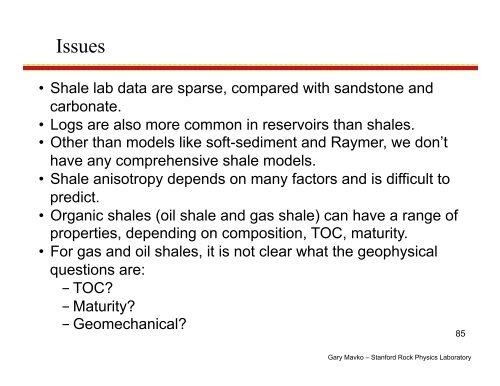Rock Physics of Shale - Stanford University
Rock Physics of Shale - Stanford University
Rock Physics of Shale - Stanford University
Create successful ePaper yourself
Turn your PDF publications into a flip-book with our unique Google optimized e-Paper software.
Issues<br />
• <strong>Shale</strong> lab data are sparse, compared with sandstone and<br />
carbonate.<br />
• Logs are also more common in reservoirs than shales.<br />
• Other than models like s<strong>of</strong>t-sediment and Raymer, we don’t<br />
have any comprehensive shale models.<br />
• <strong>Shale</strong> anisotropy depends on many factors and is difficult to<br />
predict.<br />
• Organic shales (oil shale and gas shale) can have a range <strong>of</strong><br />
properties, depending on composition, TOC, maturity.<br />
• For gas and oil shales, it is not clear what the geophysical<br />
questions are:<br />
- TOC?<br />
- Maturity?<br />
- Geomechanical?<br />
85<br />
Gary Mavko – <strong>Stanford</strong> <strong>Rock</strong> <strong>Physics</strong> Laboratory
















